Current status of molecular diagnostics for lung cancer
The management of lung cancer (LC) requires the analysis of a diverse spectrum of molecular targets, including kinase activating mutations in
EGFR,
ERBB2 (
HER2),
BRAF and
MET oncogenes,
[...] Read more.
The management of lung cancer (LC) requires the analysis of a diverse spectrum of molecular targets, including kinase activating mutations in EGFR, ERBB2 (HER2), BRAF and MET oncogenes, KRAS G12C substitutions, and ALK, ROS1, RET and NTRK1-3 gene fusions. Administration of immune checkpoint inhibitors (ICIs) is based on the immunohistochemical (IHC) analysis of PD-L1 expression and determination of tumor mutation burden (TMB). Clinical characteristics of the patients, particularly age, gender and smoking history, significantly influence the probability of finding the above targets: for example, LC in young patients is characterized by high frequency of kinase gene rearrangements, while heavy smokers often have KRAS G12C mutations and/or high TMB. Proper selection of first-line therapy influences overall treatment outcomes, therefore, the majority of these tests need to be completed within no more than 10 working days. Activating events in MAPK signaling pathway are mutually exclusive, hence, fast single-gene testing remains an option for some laboratories. RNA next-generation sequencing (NGS) is capable of detecting the entire repertoire of druggable gene alterations, therefore it is gradually becoming a dominating technology in LC molecular diagnosis.
Evgeny N. Imyanitov ... Sergey V. Orlov
The management of lung cancer (LC) requires the analysis of a diverse spectrum of molecular targets, including kinase activating mutations in EGFR, ERBB2 (HER2), BRAF and MET oncogenes, KRAS G12C substitutions, and ALK, ROS1, RET and NTRK1-3 gene fusions. Administration of immune checkpoint inhibitors (ICIs) is based on the immunohistochemical (IHC) analysis of PD-L1 expression and determination of tumor mutation burden (TMB). Clinical characteristics of the patients, particularly age, gender and smoking history, significantly influence the probability of finding the above targets: for example, LC in young patients is characterized by high frequency of kinase gene rearrangements, while heavy smokers often have KRAS G12C mutations and/or high TMB. Proper selection of first-line therapy influences overall treatment outcomes, therefore, the majority of these tests need to be completed within no more than 10 working days. Activating events in MAPK signaling pathway are mutually exclusive, hence, fast single-gene testing remains an option for some laboratories. RNA next-generation sequencing (NGS) is capable of detecting the entire repertoire of druggable gene alterations, therefore it is gradually becoming a dominating technology in LC molecular diagnosis.
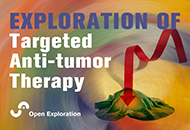 Selected meeting abstracts of 2nd International Conference on Contemporary OncologyOpen AccessMeeting AbstractsChouaib SalemPublished: June 28, 2024 Explor Target Antitumor Ther. 2024;5:789–799
Selected meeting abstracts of 2nd International Conference on Contemporary OncologyOpen AccessMeeting AbstractsChouaib SalemPublished: June 28, 2024 Explor Target Antitumor Ther. 2024;5:789–799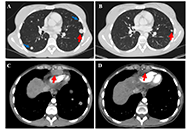 Response to trametinib, hydroxychloroquine, and bevacizumab in a young woman with NRAS-mutated metastatic intrahepatic cholangiocarcinoma: a case reportOpen AccessCase ReportSystemic chemotherapy is the main treatment option for patients with advanced intrahepatic cholangiocarcinoma (iCCA), however, its efficacy is limited. Herein, we report a young patient with NRAS-mu [...] Read more.Aram A. Musaelyan ... Sergey V. OrlovPublished: June 28, 2024 Explor Target Antitumor Ther. 2024;5:780–788
Response to trametinib, hydroxychloroquine, and bevacizumab in a young woman with NRAS-mutated metastatic intrahepatic cholangiocarcinoma: a case reportOpen AccessCase ReportSystemic chemotherapy is the main treatment option for patients with advanced intrahepatic cholangiocarcinoma (iCCA), however, its efficacy is limited. Herein, we report a young patient with NRAS-mu [...] Read more.Aram A. Musaelyan ... Sergey V. OrlovPublished: June 28, 2024 Explor Target Antitumor Ther. 2024;5:780–788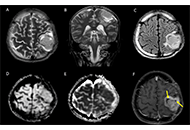 Imaging of supratentorial ependymomas with radio-pathological correlationOpen AccessOriginal ArticleAim: Supratentorial ependymoma (STE) is a rare tumor with distinct genetic alterations, whose imaging features have been scarcely studied. This study aims to review the computed tomography (CT) a [...] Read more.Arpita Sahu ... Epari SridharPublished: June 27, 2024 Explor Target Antitumor Ther. 2024;5:766–779
Imaging of supratentorial ependymomas with radio-pathological correlationOpen AccessOriginal ArticleAim: Supratentorial ependymoma (STE) is a rare tumor with distinct genetic alterations, whose imaging features have been scarcely studied. This study aims to review the computed tomography (CT) a [...] Read more.Arpita Sahu ... Epari SridharPublished: June 27, 2024 Explor Target Antitumor Ther. 2024;5:766–779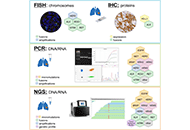 Current status of molecular diagnostics for lung cancerOpen AccessReviewThe management of lung cancer (LC) requires the analysis of a diverse spectrum of molecular targets, including kinase activating mutations in EGFR, ERBB2 (HER2), BRAF and MET oncogenes, [...] Read more.Evgeny N. Imyanitov ... Sergey V. OrlovPublished: June 27, 2024 Explor Target Antitumor Ther. 2024;5:742–765
Current status of molecular diagnostics for lung cancerOpen AccessReviewThe management of lung cancer (LC) requires the analysis of a diverse spectrum of molecular targets, including kinase activating mutations in EGFR, ERBB2 (HER2), BRAF and MET oncogenes, [...] Read more.Evgeny N. Imyanitov ... Sergey V. OrlovPublished: June 27, 2024 Explor Target Antitumor Ther. 2024;5:742–765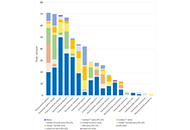 Antibody-drug conjugates combinations in cancer treatmentOpen AccessReviewAntibody-drug conjugates (ADCs) have emerged as a promising class of anticancer agents. Currently, the Food and Drug Administration has granted approval to 12 compounds, with 2 later undergoing with [...] Read more.Giulia Pretelli ... Anastasios StathisPublished: June 27, 2024 Explor Target Antitumor Ther. 2024;5:714–741
Antibody-drug conjugates combinations in cancer treatmentOpen AccessReviewAntibody-drug conjugates (ADCs) have emerged as a promising class of anticancer agents. Currently, the Food and Drug Administration has granted approval to 12 compounds, with 2 later undergoing with [...] Read more.Giulia Pretelli ... Anastasios StathisPublished: June 27, 2024 Explor Target Antitumor Ther. 2024;5:714–741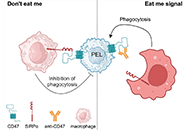 Promising immunotherapeutic approaches for primary effusion lymphomaOpen AccessReviewPrimary effusion lymphoma (PEL) is a large B-cell neoplasm usually presenting as a serious effusion in body cavities without detectable tumor masses. It is an AIDS-related non-Hodgkin’s lymphoma ( [...] Read more.Jutatip Panaampon, Seiji OkadaPublished: June 26, 2024 Explor Target Antitumor Ther. 2024;5:699–713
Promising immunotherapeutic approaches for primary effusion lymphomaOpen AccessReviewPrimary effusion lymphoma (PEL) is a large B-cell neoplasm usually presenting as a serious effusion in body cavities without detectable tumor masses. It is an AIDS-related non-Hodgkin’s lymphoma ( [...] Read more.Jutatip Panaampon, Seiji OkadaPublished: June 26, 2024 Explor Target Antitumor Ther. 2024;5:699–713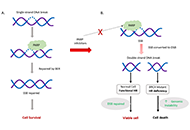 DNA damage targeted therapy for advanced breast cancerOpen AccessReviewBreast cancer (BC) is the most prevalent malignancy affecting women worldwide, including Portugal. While the majority of BC cases are sporadic, hereditary forms account for 5-10% of cases. The most [...] Read more.Vanessa Patel ... Luís CostaPublished: June 25, 2024 Explor Target Antitumor Ther. 2024;5:678–698
DNA damage targeted therapy for advanced breast cancerOpen AccessReviewBreast cancer (BC) is the most prevalent malignancy affecting women worldwide, including Portugal. While the majority of BC cases are sporadic, hereditary forms account for 5-10% of cases. The most [...] Read more.Vanessa Patel ... Luís CostaPublished: June 25, 2024 Explor Target Antitumor Ther. 2024;5:678–698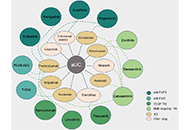 Landscape of targeted therapies for advanced urothelial carcinomaOpen AccessReviewBladder cancer (BC) is the tenth most common malignancy globally. Urothelial carcinoma (UC) is a major type of BC, and advanced UC (aUC) is associated with poor clinical outcomes and limited surviva [...] Read more.Shihao Shang ... Zheng ZhuPublished: June 21, 2024 Explor Target Antitumor Ther. 2024;5:641–677
Landscape of targeted therapies for advanced urothelial carcinomaOpen AccessReviewBladder cancer (BC) is the tenth most common malignancy globally. Urothelial carcinoma (UC) is a major type of BC, and advanced UC (aUC) is associated with poor clinical outcomes and limited surviva [...] Read more.Shihao Shang ... Zheng ZhuPublished: June 21, 2024 Explor Target Antitumor Ther. 2024;5:641–677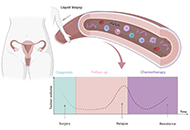 Clinical relevance of circulating tumor DNA in ovarian cancer: current issues and future opportunitiesOpen AccessReviewOvarian cancer (OC) is the most lethal gynecologic malignancy worldwide. Due to the lack of effective screening and early detection strategies, many patients with OC are diagnosed with advanced dise [...] Read more.Elena Trevisi ... Ilaria ColomboPublished: June 19, 2024 Explor Target Antitumor Ther. 2024;5:627–640
Clinical relevance of circulating tumor DNA in ovarian cancer: current issues and future opportunitiesOpen AccessReviewOvarian cancer (OC) is the most lethal gynecologic malignancy worldwide. Due to the lack of effective screening and early detection strategies, many patients with OC are diagnosed with advanced dise [...] Read more.Elena Trevisi ... Ilaria ColomboPublished: June 19, 2024 Explor Target Antitumor Ther. 2024;5:627–640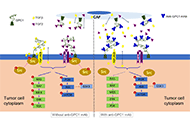 Evaluation of antitumor potential of an anti-glypican-1 monoclonal antibody in preclinical lung cancer models reveals a distinct mechanism of actionOpen AccessOriginal ArticleAim: The main objective of this study was to investigate the antitumor effect of a mouse anti-human glypican-1 (GPC1) monoclonal antibody (mAb) on non-small cell lung carcinoma (NSCLC) and associ [...] Read more.Minghua Li ... Qingyu ZhouPublished: June 17, 2024 Explor Target Antitumor Ther. 2024;5:600–626
Evaluation of antitumor potential of an anti-glypican-1 monoclonal antibody in preclinical lung cancer models reveals a distinct mechanism of actionOpen AccessOriginal ArticleAim: The main objective of this study was to investigate the antitumor effect of a mouse anti-human glypican-1 (GPC1) monoclonal antibody (mAb) on non-small cell lung carcinoma (NSCLC) and associ [...] Read more.Minghua Li ... Qingyu ZhouPublished: June 17, 2024 Explor Target Antitumor Ther. 2024;5:600–626